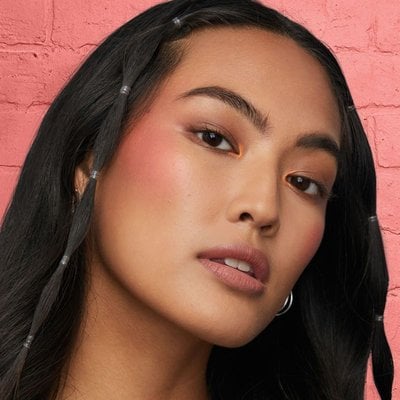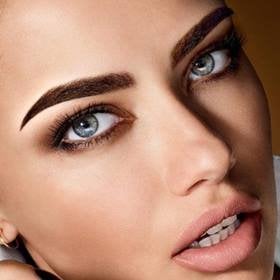Orange Colour Corrector: Uses & Application

When it comes to makeup, colour correctors are often neglected. Most of us are still limited to using only concealers and foundations for creating an even base. But what about the dark circles, pigmentation, and uneven skin tone, especially in Indian skin? An orange colour corrector will help you blur them out for a flawless makeup. Read on as we discuss the uses and application of an orange colour corrector and why you should invest in one, if not done already!
What is an Orange Colour Corrector Used For?
Orange colour corrector has many functions, such as -
● Supports Concealers : Helps seamless blending without ashy undertones.
● Counters Dark Circles : Brightens the blue-purple under-eye bags.
● Smooths Acne Scars : Counters the dark marks left behind by acne breakouts.
● Removes Dullness : Adds warmth to your skin and counters dull tones.
● Covers Dark Lips : Helps counter blue, pale lips before using lip makeup
So, whether you've already experimented with makeup or are just beginning to explore orange colour correction, here’s everything you need to know about orange colour corrector uses and how to apply it for the best results.
What Is an Orange Colour Corrector?
An orange colour corrector can be a powder, cream, or liquid pigment that helps you neutralise dark patches on the skin. According to colour theory, orange sits opposite blue. Since opposite shades on the colour wheel cancel each other out, this colour corrector works so well to counter pigmented deep blue or purple tones, such as under-eye shadows or post-acne scars.
When the orange pigment neutralises the unwanted dark tones, your orange colour concealer or foundation glides on more smoothly, without leaving a grey cast, especially in minimalist makeup looks. This makes the orange colour corrector especially effective for dark circles, dullness, and hyperpigmentation in medium to deep skin tones. For lighter skin, a peach-toned corrector is more suitable.
Orange Colour Corrector Uses
Supports Concealers
Going straight in with concealer often results in pigmentation peeking through or casting a greyish tone. That’s where orange colour corrector use becomes key. It neutralises stubborn undertones, allowing your face makeup to appear more even and natural.
Counters Dark Circles
Dark blue or purple under-eye circles are common, especially on medium to deep skin tones. Orange colour corrector for dark circles helps balance out these tones, so your concealer brightens your eye makeup instead of turning it ashy or grey.
Smooths Acne Scars
Old acne marks can have a bluish or purplish tint that regular concealers can’t fully mask. Orange colour corrector use helps fade that shadowed effect, making your base appear more uniform.
Removes Dullness
Ashy or grey-toned patches around the mouth or jawline can make your skin look dull and tired. These patches tend to peek through makeup as well. A smart orange colour corrector use instantly adds warmth, lifting dull areas before foundation.
Covers Dark Lips
If your lips have a blue or purple undertone, lipstick alone might not show true to colour. A quick orange colour corrector for lip makeup helps neutralise discolouration and brings out your chosen shade better.
How to Apply an Orange Colour Corrector
Step 1 : Primer
Start with a clean, dry face. Apply a dewy, hydrating primer to ensure your orange colour corrector concealer blends well and stays crease-free. Hydration improves product adherence and prevents the corrector from settling into fine lines.
Step 2 : Apply Your Orange Corrector
Using a brush, damp makeup sponge, or your fingertip, you can gently tap the orange corrector makeup onto areas with discolouration. Focus on inner under-eye corners and directly on acne marks or scars. Go light, a sheer layer of orange colour corrector will let your concealer sit naturally on top without caking.
Step 3 : Blend Carefully
Use a brush or sponge to softly blend the edges, without completely wiping off the orange colour corrector. Let the pigment set for a few seconds. This helps avoid it mixing into your concealer and keeps the correction intact.
Step 4 : Conceal
Layer your orange colour concealer on top of the corrector. Tap it in gently to avoid disturbing the base layer. You can also use a buildable foundation to create a uniform finish.
Tip: Use a concealer that’s slightly lighter than your skin tone to add a subtle glow. Read more to learn how to apply concealers properly.
Step 5 : Set
Once your makeup look is ready, lightly spritz on a setting spray to hold the look in place. This is especially helpful if you’re prone to under-eye creasing.
Don’t Have an Orange Colour Corrector?
In a pinch, a warm orange or peach lipstick can substitute for an orange colour corrector. Some even use orange-toned eyeshadow as a DIY alternative. While not ideal for long wear, these hacks can be effective for short events or photoshoots.
Common Mistakes to Avoid with Orange Colour Correction
Using an orange colour corrector may sound straightforward, but a few missteps can impact your results:
- Using too much: Heavy application can make the skin look orange under base makeup. Always keep layers sheer and build only as needed.
- Skipping prep: Always hydrate the skin to avoid creasing or patchiness, especially under the eyes.
- Choosing the wrong shade: The wrong undertone of orange colour concealer can look unnatural. Fair skin does better with peaches, while deeper skin tones can handle richer oranges.
- Remember, orange colour correction is a support step, not the main act. Its goal is to prepare the skin for seamless concealer application, not to be the coverage itself.
Now that you know everything about orange colour correction, it’s time to build up the rest of your makeup look with Maybelline India. Try the Virtual Try-On tool to try versatile makeup products online, with just a picture or your front camera. You can also try the Maybelline Foundation Finder tool to find your tone matched concealers and foundations to complement the orange colour corrector.
Read more with Mayelline’s colour corrector guide and for more tips on acing the flawless base, stay tuned to our face makeup tips.




